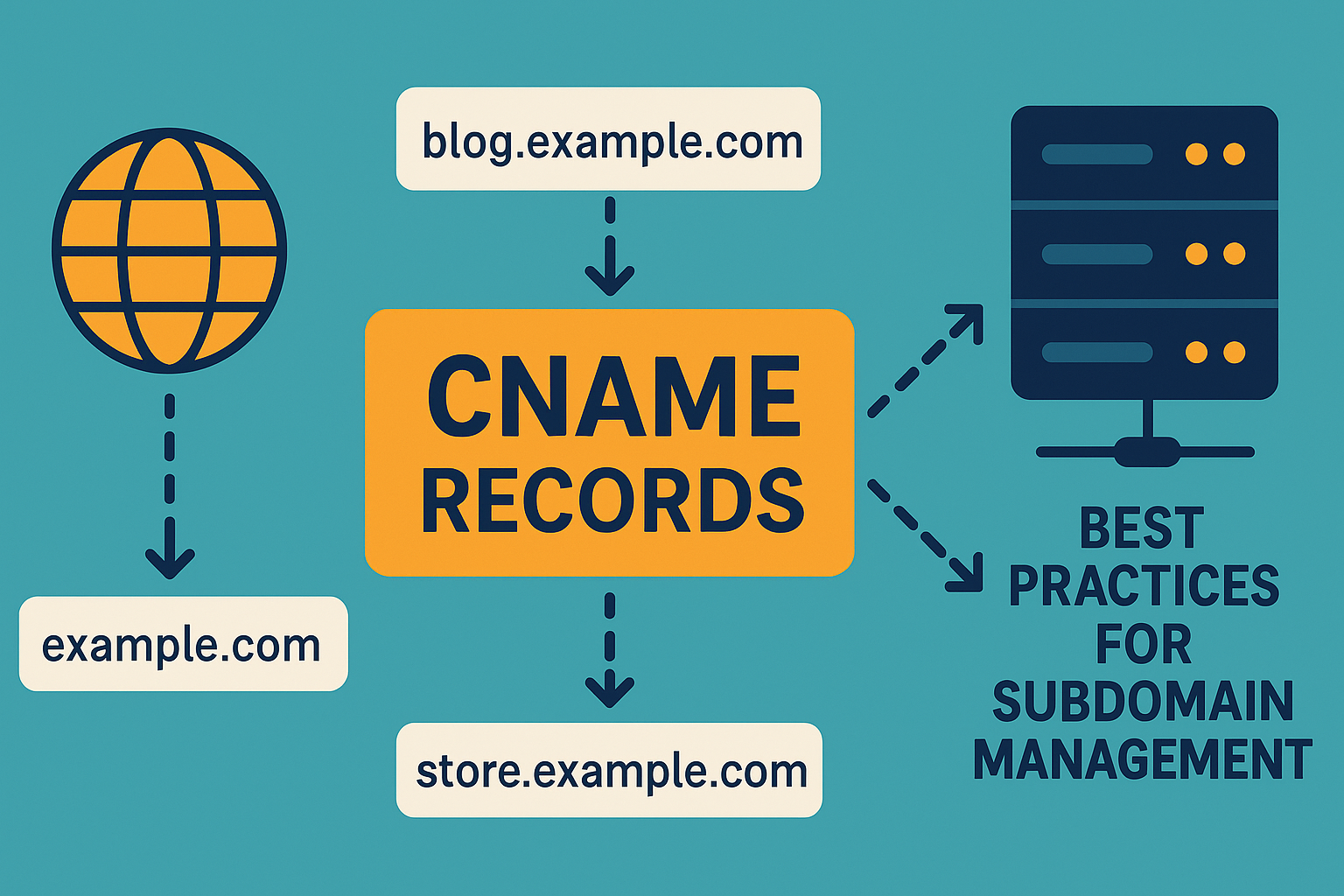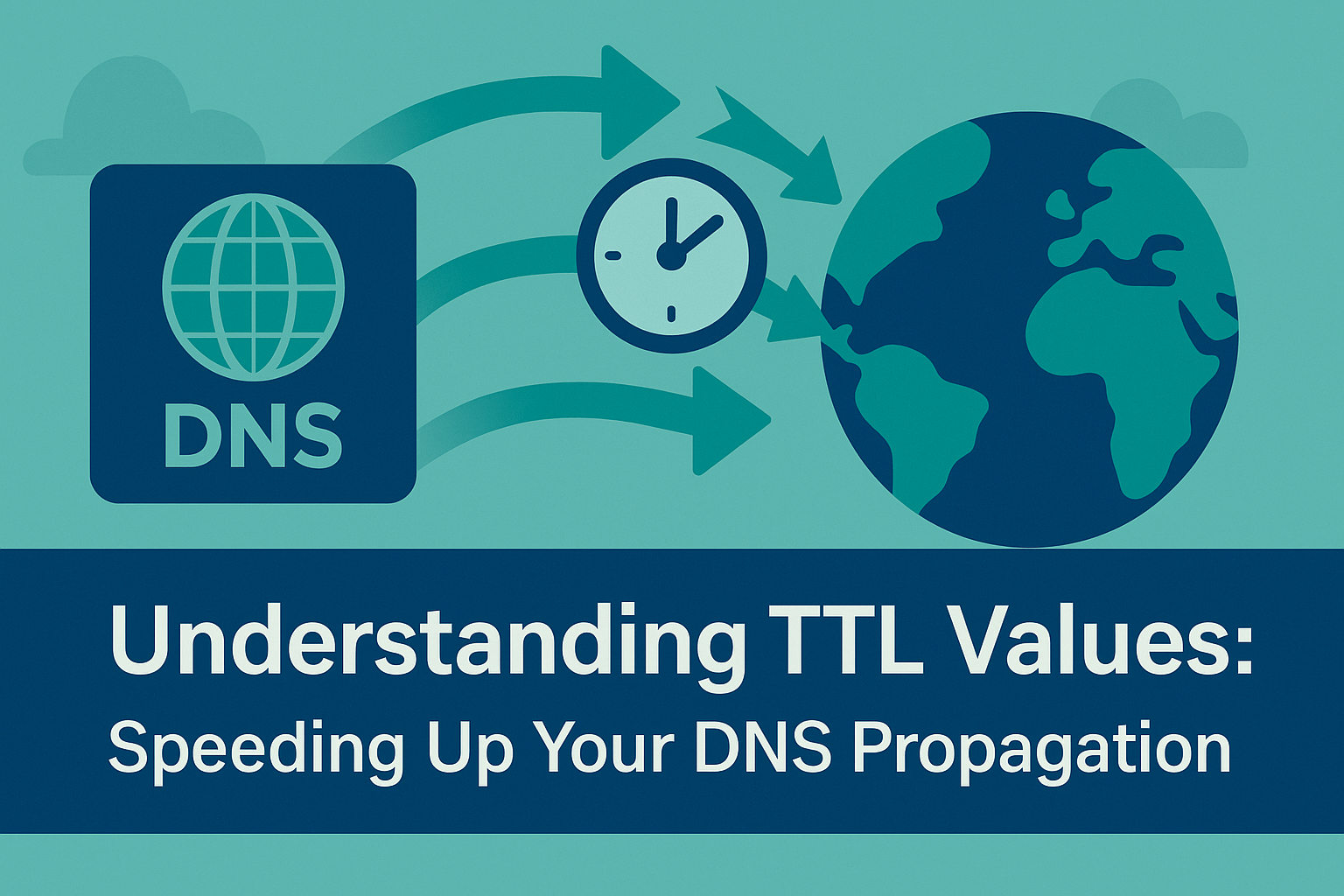Managing subdomains with CNAME records can feel like juggling flaming torches—exciting, powerful, but a slip-up can burn ya! In this guide, we’ll walk through what CNAME records are, why they’re awesome for subdomain routing, and most importantly, best practices to keep your DNS circus running smoothly. Oh, and I’ll sprinkle in a typo or two (because no one’s perfect, right? 😉).
What Is a CNAME Record, Really?
At its core, a CNAME (Canonical Name) record is like a shortcut. Instead of mapping blog.example.com directly to an IP, it points to another domain name (example.com or even ghs.googlehosted.com), which in turn resolves to an IP via its own A or AAAA records.
- Example:
blog.example.com CNAME example.com.When a user visitsblog.example.com, DNS resolvers find the CNAME, then look upexample.com’s A/AAAA records to get the IP.
This indirection is perfect for when you host services elsewhere (e.g. a blog platform, email service, or CDN). Change the target domain’s records once, and all its CNAME aliases update automagically.
Why Use CNAMEs for Subdomains?
- Centralized Management:
Say you haveblog.,shop., andforum.subdomains all pointing to the same server. Instead of updating three separate A records if the IP changes, you updateexample.comin one place. - Third-Party Services:
Many SaaS apps require you to create a CNAME pointing to their domain (e.g.app.customer.com CNAME app.saasprovider.com). - Load Balancers & CDNs:
CDNs often give you a CNAME (likeabcd.cdn.net) to point your domain to; this way, you can keep your infrastructure private.
Common Pitfalls to Avoid
1. Chaining CNAMEs (Don’t Do It)
a.example.com CNAME b.example.com.
b.example.com CNAME c.example.com.
c.example.com A 203.0.113.45
Resolvers must traverse each link one by one, increasing lookup time and risk of failure. Stick to a single CNAME hop.
2. Pointing the Root Domain
RFCs disallow a CNAME at the apex (example.com CNAME something.com.). It breaks other records (MX, NS) and isn’t supported by most DNS hosts. Use ALIAS/ANAME if your provider supports it.
3. Missing Trailing Dots
Forget the trailing dot (.) in your DNS zone file, and your DNS host might append your domain twice (blog.example.com.example.com—oops).
Best Practices for Smooth Subdomain Management
1. Keep It Simple
- One CNAME hop maximum.
- Use clear naming conventions:
blog,shop,app,cdn1, etc.
2. Document Everything
Maintain a spreadsheet or internal wiki listing each subdomain, its CNAME target, and the purpose. It’ll save headaches when you revisit this in six months.
3. Monitor & Audit
- Use tools like FastDNSCheck.com’s CNAME Lookup to verify that all aliases resolve correctly worldwide.
- Automate daily or weekly checks—catch misconfigurations before they affect users.
4. Leverage Wildcards Sparingly
Wildcard CNAMEs (*.example.com) can catch all undefined subdomains, but they also hide typos. Use them only if you really need wildcard routing.
5. TTL Tuning
- Low TTL (300–600s): Good during migrations when frequent updates are expected.
- Higher TTL (3600s+): After stabilizing, raise TTL to reduce DNS queries and lighten load on resolvers.
Step-by-Step: Adding a CNAME in WordPress DNS Plugin
- Open Your DNS Plugin Settings on FastDNSCheck or WP admin
- Navigate to “Add Record” → Select CNAME
- Enter Subdomain (e.g.
blog) → Target (e.g.example.com.) - Set TTL → Click Save
- Verify with a CNAME lookup on FastDNSCheck.com
Voila! Your alias is live in the global DNS network (give it a few mins for propagation).
Real-World Example: Running Multiple Services
Imagine you run:
blog.example.com→ WordPress hostshop.example.com→ Shopifyforum.example.com→ Discourse
Without CNAMEs, you’d maintain separate A records for each, plus their respective load balancers. With CNAMEs all pointing to their service domains, migrations or provider changes only need one update at the origin service’s DNS.
Q&A
Q1: Can I mix A records and CNAMEs for the same subdomain?
A: No. A record and CNAME for the same name conflict and most DNS servers will reject the zone.
Q2: What if my DNS provider doesn’t support ALIAS or ANAME?
A: You’ll need to use A records for the apex domain. Consider moving to a provider that supports ANAME for smoother workflows.
Q3: How do I debug a broken CNAME?
A:
- Check for chained CNAMEs.
- Verify the target has an A/AAAA.
- Use FastDNSCheck.com from multiple locations to see where it fails.
And that’s your master plan for CNAME records! Drop a comment if something’s unclear—typos included!


